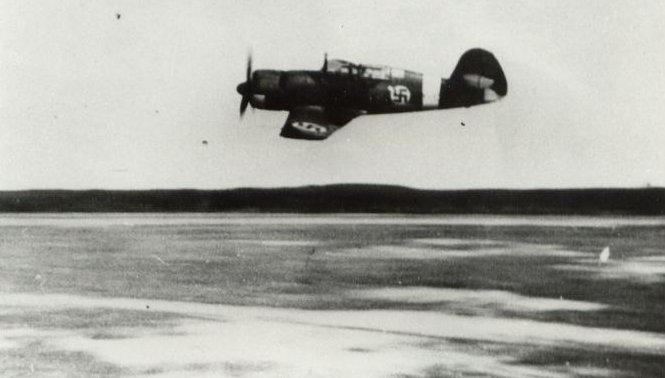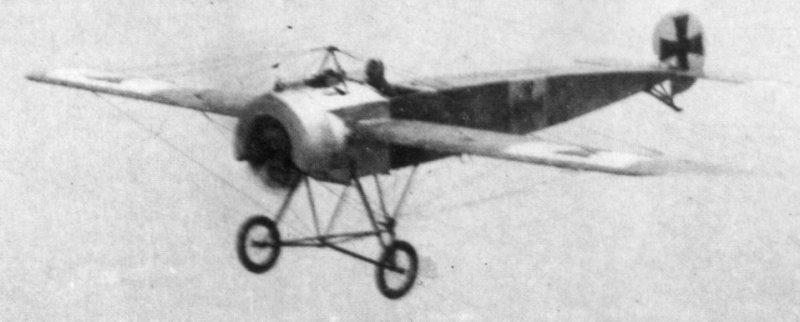|
No. 16 Squadron (Finland)
No. 16 Squadron ( fi, Lentolaivue 16 or ''LLv.16'', from 3 May 1942 ''Le.Lv.16''), renamed No. 16 Reconnaissance Squadron (Finnish: ''Tiedustelulentolaivue 16'' or ''TLe.Lv.16'' on 14 February 1944) was a reconnaissance squadron of the Finnish Air Force during World War II. The squadron was part of Flying Regiment 1 during the Winter War and Flying Regiment 2 during the Continuation War. Organization Winter War *1st Flight (''1. Lentue'') *2nd Flight (''2. Lentue'') *3rd Flight (''3. Lentue'') The equipment consisted of 8 Blackburn Ripon IIs, 4 Fokker C.VEs, 3 Junkers W 34 and K 43, and 3 Fokker C.Xs. Continuation War *HQ Flight (''Esikuntalentue'', operational between 8 June 1942 and 1 July 1943) *1st Flight (''1. Lentue'') *2nd Flight (''2. Lentue'') *3rd Flight (''3. Lentue'') *Detachment Jäntti (''Osasto Jäntti'', temporary detachment July–August 1944) The equipment consisted of 5 Gloster Gladiator IIs, 3 Fokker D.Xs, 4 Westland Lysander Is, 6 VL Myrsky IIs, a ... [...More Info...] [...Related Items...] OR: [Wikipedia] [Google] [Baidu] |
Fokker C
Fokker was a Dutch aircraft manufacturer named after its founder, Anthony Fokker. The company operated under several different names. It was founded in 1912 in Berlin, Germany, and became famous for its fighter aircraft in World War I. In 1919 the company moved its operations to the Netherlands. During its most successful period in the 1920s and 1930s, it dominated the civil aviation market. Fokker went into bankruptcy in 1996, and its operations were sold to competitors. History Fokker in Germany At age 20, while studying in Germany, Anthony Fokker built his initial aircraft, the ''Spin'' (Spider)—the first Dutch-built plane to fly in his home country. Taking advantage of better opportunities in Germany, he moved to Berlin, where in 1912, he founded his first company, Fokker Aeroplanbau, later moving to the Görries suburb just southwest of Schwerin (at ), where the current company was founded, as Fokker Aviatik GmbH, on 12 February 1912. World War I Fokker capitalized o ... [...More Info...] [...Related Items...] OR: [Wikipedia] [Google] [Baidu] |
VL Myrsky
The VL Myrsky ("Storm") is a Finnish World War II fighter aircraft originally developed by Valtion lentokonetehdas for the Finnish Air Force. The models of the aircraft were Myrsky I, Myrsky II, and Myrsky III. It was designed by Edward Wegelius, Martti Vainio and Torsti Verkkola who worked at Valtion lentokonetehdas. Development The decision to start developing a new fighter for the Finnish Air Force was based on experience gained before the Winter War: in the "arms race" leading up to a war, smaller nations can have difficulty purchasing top-of-the-line fighters without a significant political cost. The Finnish Air Force requested preliminary proposals for a domestic fighter from State Aircraft Factory (Valtion Lentokonetehdas) in early 1939, before the Winter War. State Aircraft Factory prepared five alternative proposals by May 1939. After that, The Ministry of Defence ordered the fighter design from State Aircraft Factory in June 1939. The preliminary design was made by ... [...More Info...] [...Related Items...] OR: [Wikipedia] [Google] [Baidu] |
Westland Lysander
The Westland Lysander is a British army co-operation and liaison aircraft produced by Westland Aircraft that was used immediately before and during the Second World War. After becoming obsolete in the army co-operation role, the aircraft's short-field performance enabled clandestine missions using small, improvised airstrips behind enemy lines to place or recover agents, particularly in occupied France with the help of the French Resistance. Royal Air Force army co-operation aircraft were named after mythical or historical military leaders; in this case the Spartan admiral Lysander was chosen. Design and development In 1934 the Air Ministry issued Specification A.39/34 for an army co-operation aircraft to replace the Hawker Hector. Initially Hawker Aircraft, Avro and Bristol were invited to submit designs, but after some debate within the Ministry, a submission from Westland was invited as well. The Westland design, internally designated P. 8, was the work of Arthur ... [...More Info...] [...Related Items...] OR: [Wikipedia] [Google] [Baidu] |
Fokker D
Fokker was a Dutch aircraft manufacturer named after its founder, Anthony Fokker. The company operated under several different names. It was founded in 1912 in Berlin, Germany, and became famous for its fighter aircraft in World War I. In 1919 the company moved its operations to the Netherlands. During its most successful period in the 1920s and 1930s, it dominated the civil aviation market. Fokker went into bankruptcy in 1996, and its operations were sold to competitors. History Fokker in Germany At age 20, while studying in Germany, Anthony Fokker built his initial aircraft, the ''Spin'' (Spider)—the first Dutch-built plane to fly in his home country. Taking advantage of better opportunities in Germany, he moved to Berlin, where in 1912, he founded his first company, Fokker Aeroplanbau, later moving to the Görries suburb just southwest of Schwerin (at ), where the current company was founded, as Fokker Aviatik GmbH, on 12 February 1912. World War I Fokker capitalized o ... [...More Info...] [...Related Items...] OR: [Wikipedia] [Google] [Baidu] |
Gloster Gladiator
The Gloster Gladiator is a British biplane fighter. It was used by the Royal Air Force (RAF) and the Fleet Air Arm (FAA) (as the Sea Gladiator variant) and was exported to a number of other air forces during the late 1930s. Developed privately as the Gloster SS.37, it was the RAF's last biplane fighter aircraft, and was rendered obsolete by newer monoplane designs even as it was being introduced. Though often pitted against more formidable foes during the early days of the Second World War, it acquitted itself reasonably well in combat. The Gladiator saw action in almost all theatres during the Second World War, with a large number of air forces, some of them on the Axis side. The RAF used it in France, Norway, Greece, the defence of Malta, the Middle East, and the brief Anglo-Iraqi War (during which the Royal Iraqi Air Force was similarly equipped). Other countries deploying the Gladiator included China against Japan, beginning in 1938; Finland (along with Swedish voluntee ... [...More Info...] [...Related Items...] OR: [Wikipedia] [Google] [Baidu] |
Junkers K 43
The Junkers W 34 was a German-built, single-engine, passenger and transport aircraft. Developed in the 1920s, it was taken into service in 1926. The passenger version could take a pilot and five passengers. The aircraft was developed from the Junkers W 33. Further development led to the Junkers Ju 46. Production and service One Junkers W 34 be/b3e managed to break the then-current altitude record on 26 May 1929 when it reached . That aircraft carried the markings D-1119 and it was equipped with a Bristol Jupiter VII engine. The airplane was flown by Willi Neuenhofen. The Junkers W 34 was manufactured in many different versions. The total production numbers for the civil market were around 1,000, a further 2,024 his and haus were built under license for the RLM and ''Luftwaffe''. The unit price was between RM 65,000 and 70,400. On 31 January 1944 the ''Luftwaffe'' still had 618 W 34''his and 516 W 34haus in service: the majority were used by flight schools; mainly as navi ... [...More Info...] [...Related Items...] OR: [Wikipedia] [Google] [Baidu] |
Junkers W 34
The Junkers W 34 was a German-built, single-engine, passenger and transport aircraft. Developed in the 1920s, it was taken into service in 1926. The passenger version could take a pilot and five passengers. The aircraft was developed from the Junkers W 33. Further development led to the Junkers Ju 46. Production and service One Junkers W 34 be/b3e managed to break the then-current altitude record on 26 May 1929 when it reached . That aircraft carried the markings D-1119 and it was equipped with a Bristol Jupiter VII engine. The airplane was flown by Willi Neuenhofen. The Junkers W 34 was manufactured in many different versions. The total production numbers for the civil market were around 1,000, a further 2,024 his and haus were built under license for the RLM and ''Luftwaffe''. The unit price was between RM 65,000 and 70,400. On 31 January 1944 the ''Luftwaffe'' still had 618 W 34''his and 516 W 34haus in service: the majority were used by flight schools; mainly as nav ... [...More Info...] [...Related Items...] OR: [Wikipedia] [Google] [Baidu] |
Blackburn Ripon
The Blackburn T.5 Ripon was a carrier-based torpedo bomber and reconnaissance biplane designed and produced by the British aircraft manufacturer Blackburn Aircraft. It was the basis for both the license-produced Mitsubishi B2M and the improved Blackburn Baffin. The Ripon was designed as a successor to the Blackburn Dart torpedo bomber as well as a long-range reconnaissance aircraft to fulfil Air Ministry Specification 21/23. The first prototype made its maiden flight on 17 April 1926, it was subsequently redesigned with a more effective engine installation, an enlarged rudder and increased wing sweepback. It was originally ordered into production for the Fleet Air Arm (FAA), which primarily operated the type as a torpedo bomber. The Ripon was operated by the FAA between 1930 and 1935, after which point it was withdrawn in favour of the Blackburn Baffin, which was an improved derivative of the Ripon. It was also produced overseas in Finland; many of the Ripons in service with t ... [...More Info...] [...Related Items...] OR: [Wikipedia] [Google] [Baidu] |
Winter War
The Winter War,, sv, Vinterkriget, rus, Зи́мняя война́, r=Zimnyaya voyna. The names Soviet–Finnish War 1939–1940 (russian: link=no, Сове́тско-финская война́ 1939–1940) and Soviet–Finland War 1939–1940 (russian: link=no, Сове́тско-финляндская война́ 1939–1940) are often used in Russian historiographybr>В.Н. Барышников. От прохладного мира к Зимней войне. Восточная политика Финляндии в 1930–е годы. Санкт-Петербург, 1997.; О.Д. Дудорова. Неизвестные страницы Зимней войны. In: Военно-исторический журнал. 1991. №9.; Зимняя война 1939–1940. Книга первая. Политическая история. М., 1998. – ; ttp://www.otvaga2004.narod.ru/photo/winterwar/wwar1.htm М. Коломиец. Танки в Зимней войне 19 ... [...More Info...] [...Related Items...] OR: [Wikipedia] [Google] [Baidu] |
Flying Regiment 2, Finnish Air Force
Flying Regiment 2 ( fi, Lentorykmentti 2 or ''LentoR 2'', renamed on May 5, 1942 into ''LeR 2'') was fighter regiment of the Finnish Air Force during World War II. Organization Winter War * No. 22 Squadron: fighter squadron * No. 24 Squadron: fighter squadron * No. 26 Squadron: fighter squadron * No. 28 Squadron: fighter squadron Continuation War *HQ *HQ Company * No. 16 Squadron: reconnaissance squadron, attached to LeR 2 on May 6, 1942. * No. 12 Squadron: fighter squadron * No. 26 Squadron: fighter squadron * No. 28 Squadron: fighter squadron * No. 25 Supplement Squadron Maintenance companies *3rd Airfield Company (''3. Lentokenttäkomppania'' or ''3.Le.KenttäK'') *4th Airfield Company (''4. Lentokenttäkomppania'' or ''4.Le.KenttäK'') Lapland War * No. 14 Squadron: fighter squadron * No. 26 Squadron: fighter squadron * No. 28 Squadron: fighter squadron The equipment consisted among others of Fokker D.XXIs, Morane-Saulnier MS.406s, Brewster Buffaloes, Messerschmitt Bf 1 ... [...More Info...] [...Related Items...] OR: [Wikipedia] [Google] [Baidu] |
Flying Regiment 1, Finnish Air Force
Flying Regiment 1 ( fi, Lentorykmentti 1 or ''LeR 1'') was a mixed regiment, incorporating both fighter, reconnaissance and communication squadrons, of the Finnish Air Force during World War II. The unit was disbanded in June 1941, but reformed from the Supplement Flying Regiment on May 3, 1942. After its deactivation it was formed int No. 2 Wing ( fi, 2. Lennosto). Organization Winter War * No. 10 Squadron: dive bomber squadron * No. 12 Squadron: reconnaissance squadron * No. 14 Squadron: reconnaissance squadron * No. 16 Squadron: reconnaissance squadron Continuation War * No. 12 Squadron: reconnaissance squadron * No. 32 Squadron: fighter squadron Maintenance companies *1st Airfield Company (''1. Lentokenttäkomppania'' or ''1.Le.KenttäK'') *2nd Airfield Company (''2. Lentokenttäkomppania'' or ''2.Le.KenttäK'') The equipment consisted of some 200-240 aircraft, including Curtiss Hawk 75As, Fokker D.XXIs, Morane-Saulnier MS.406s, Gloster Gladiator IIs, Arado 196s, Curt ... [...More Info...] [...Related Items...] OR: [Wikipedia] [Google] [Baidu] |






.jpg)

